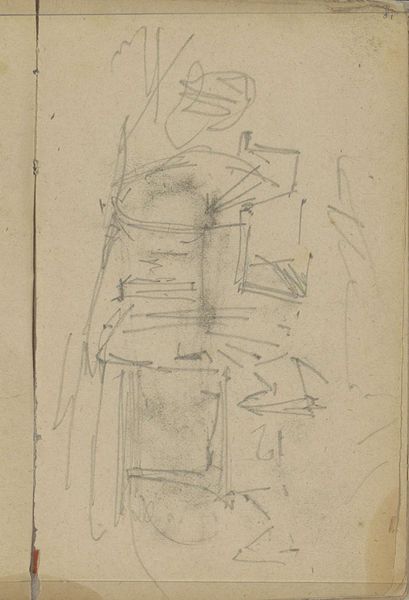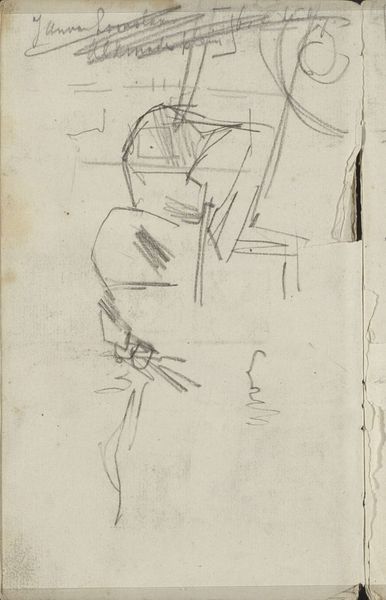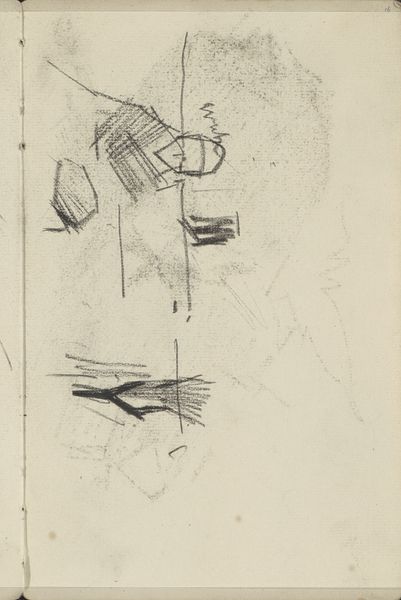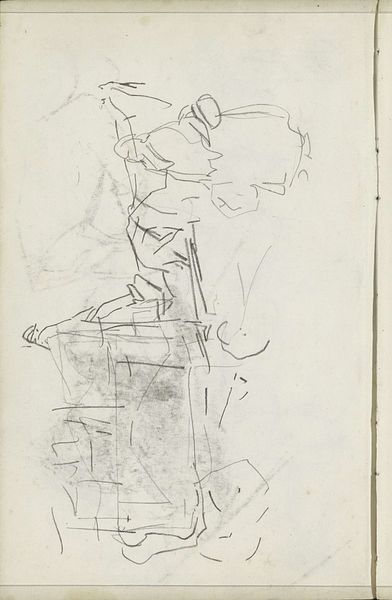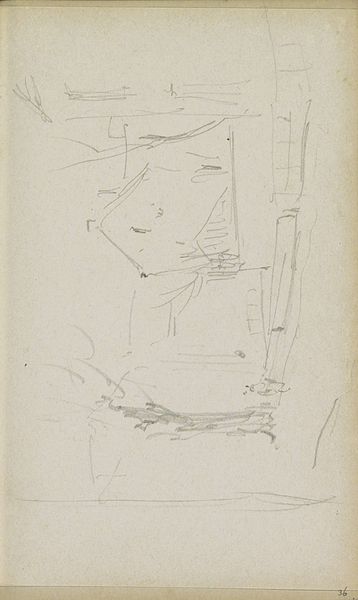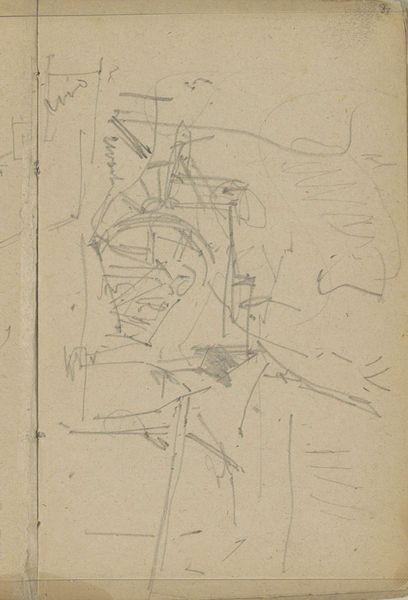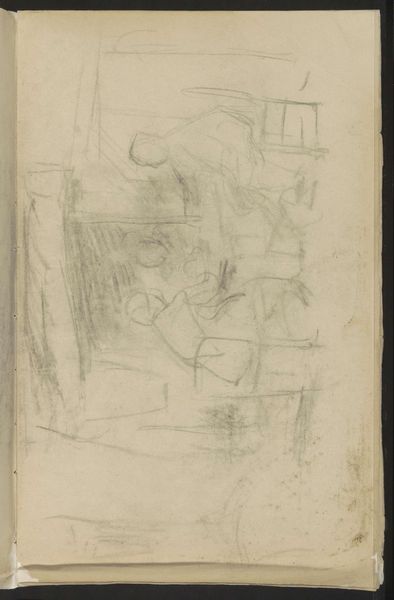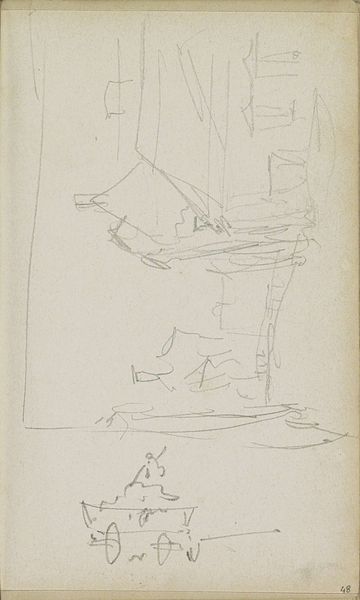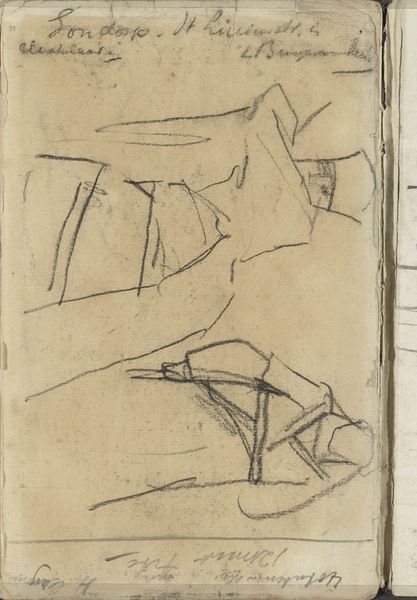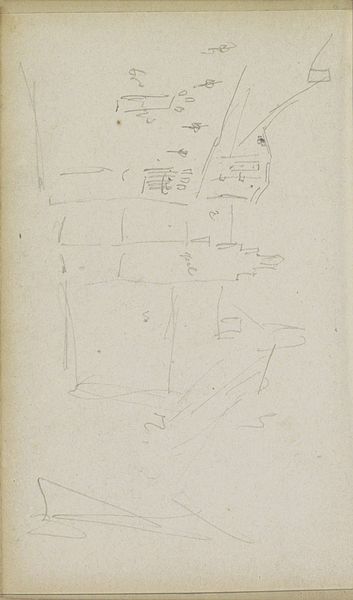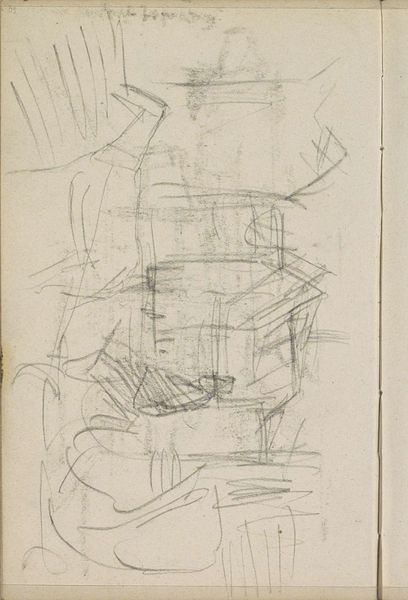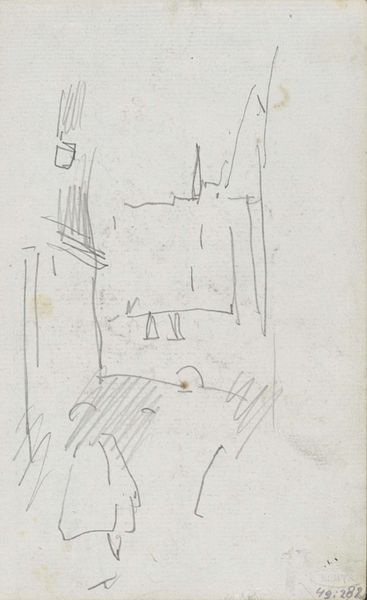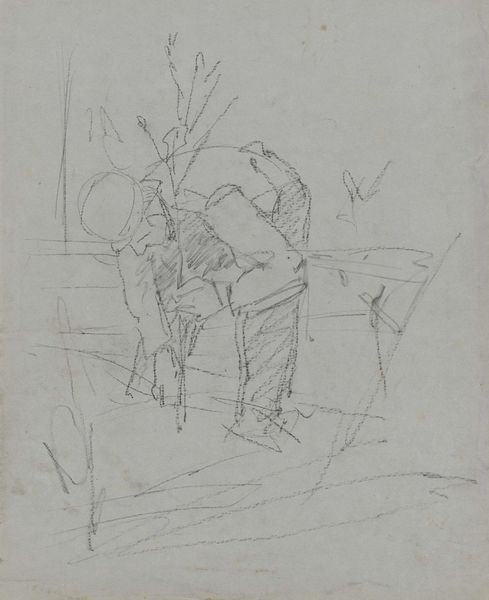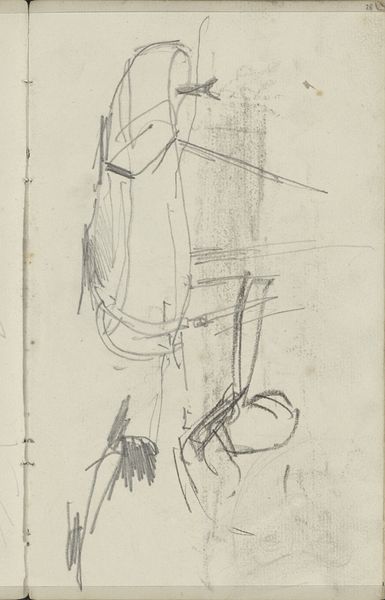
drawing, paper, graphite
#
drawing
#
impressionism
#
landscape
#
paper
#
graphite
Copyright: Rijks Museum: Open Domain
Curator: Well, here we have George Hendrik Breitner's "Boats Before a Building," created between 1880 and 1882, and currently housed here at the Rijksmuseum. It's a graphite drawing on paper. Editor: It looks incredibly raw, like a fleeting impression captured on the go. There’s a kind of structural dynamism despite the sketch-like quality, a real emphasis on the geometry of the boats and buildings. Curator: Absolutely, and that sketch-like quality speaks to the rapid industrialization of Amsterdam at the time. Breitner was known for capturing the city's evolving landscape, the labour that produced that, and this drawing provides a direct glimpse into that transformative process. It gives insight into how infrastructures such as canals become sites of labor, sites where wealth is extracted. Editor: I can see that. But even divorced from that social narrative, it’s a fascinating study in form and composition. Note the way he uses a spareness of line to create depth, layering the boats against the suggestion of a larger building behind. The artist reduces a complicated scene to just a few essentials. Curator: And those "essentials" reveal so much about the conditions of production. Consider the type of boats Breitner chooses to depict and the implications for trade. The artist certainly could be exploring class dynamics here by drawing this particular landscape, making particular marks with specific purpose in mind. Editor: But look at how the shapes themselves interact. It is about visual experience—the thrust of a diagonal line countered by the solidity of the blockier shapes. There’s a play of light and shadow even in the stark graphite, suggesting atmosphere with a masterful economy. The arrangement, at the end of the day, offers up a satisfying pictorial balance. Curator: Perhaps...but this satisfying "pictorial balance" wasn't just conjured from thin air. It reflects a very real, tangible, material reality for laborers at the time! It wasn't an easy balance for all involved in the making of the Dutch city... Editor: Indeed. I think that, despite our different takes, we can both appreciate how Breitner's choice of medium and stark execution conveys his interest in documenting the world in real time, whatever aspects of the scene interest you most. Curator: Agreed. It offers a powerful look into not only form but also function, the very engine of that period.
Comments
No comments
Be the first to comment and join the conversation on the ultimate creative platform.
